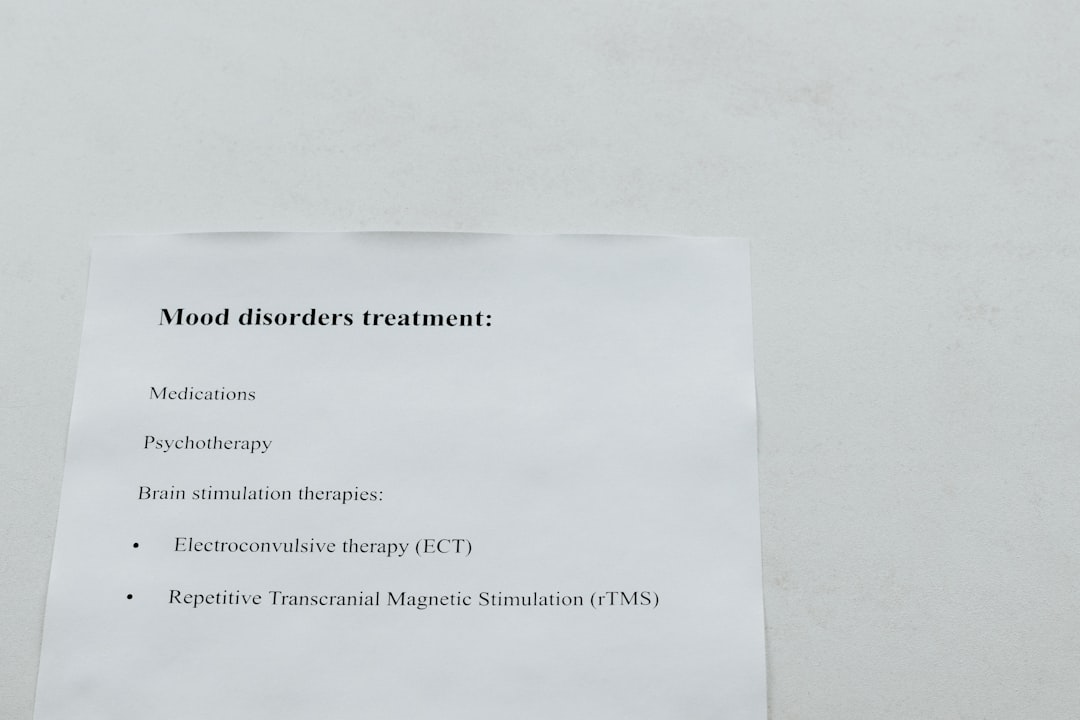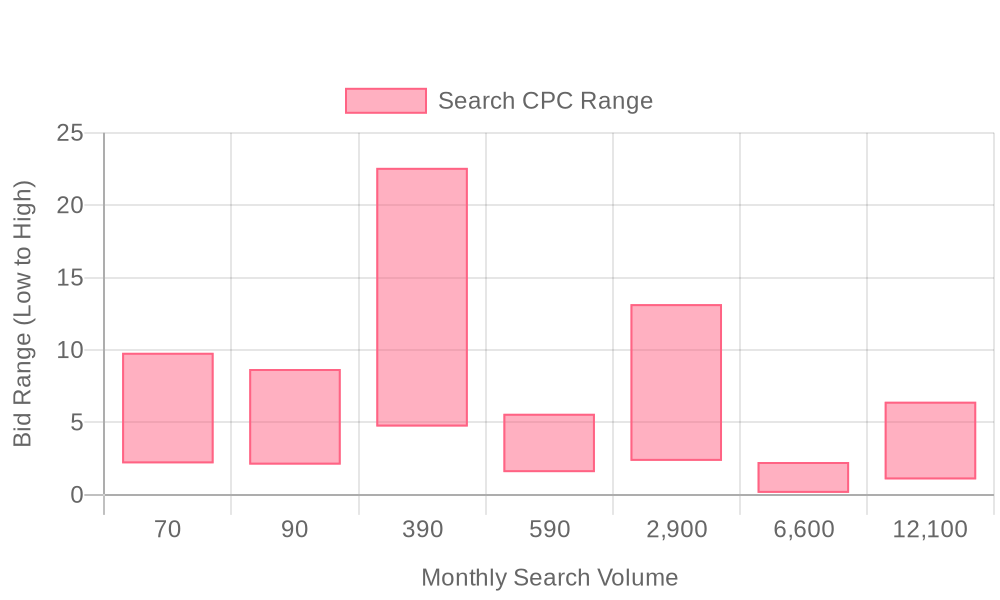
Supercharge your lead generation with a FREE Google Ads audit - no strings attached! See how you can generate more and higher quality leads
Get My Free Google Ads AuditFree consultation

No commitment
Supercharge your lead generation with a FREE Google Ads audit - no strings attached! See how you can generate more and higher quality leads
Get My Free Google Ads AuditFree consultation

No commitment
In today's advanced digital marketing world, professionals across various sectors seek to blend online strategies like search engine marketing into their existing efforts. Among these solutions, Google Ads stands out as a key tool for increasing visibility, generating high-quality leads, and bridging the gap between online engagement and final service delivery. For those in the medical transcription field, Google Ads offers a unique opportunity:

Medical transcription providers face a digital marketplace where decision-makers move fluidly across channels, evaluating accuracy, turnaround, and compliance before choosing a vendor. Delivering a consistent, data-driven experience in this fragmented landscape requires more than broad outreach—it demands precision, transparency, and actionable insights at every stage. For a deeper dive into optimizing your strategies, explore this comprehensive guide to account-based marketing.
A modern medical transcription marketing strategy begins by integrating Google Ads directly into your core demand generation processes. This ensures every click and impression is not just a number but a potential client whose journey can be mapped, measured, and influenced. Advanced platforms enable you to connect high-value intent signals with CRM data, allowing teams to prioritize accounts with demonstrated interest and greater deal potential. For tailored guidance on using Google Ads to generate leads, review this step-by-step approach for medical transcriptionists.
Leveraging targeted keywords and audience segmentation specific to medical transcription services helps eliminate wasted spend and focuses outreach on clinics, practices, and hospitals most likely to convert. By dynamically updating audience segments as prospects interact with your brand—downloading a compliance white paper or requesting a pricing sheet—you can reallocate budget toward those moving deeper into the funnel. This real-time responsiveness is essential for healthcare PPC campaigns, where intent and urgency often spike during regulatory changes or peak workflow seasons.
Optimizing landing pages and ad creatives for medical transcription advertising requires tailoring content to the unique needs of healthcare professionals. Compliance, integration with existing EHR systems, and data security assurances must be featured prominently, and value propositions like “99% accuracy” or “HIPAA-compliant documentation” should be validated with third-party proof. Continuous A/B testing aligned with visitor-level data makes it possible to refine messaging, imagery, and call-to-actions, driving up conversion rates while lowering acquisition costs.
Traditionally, a major frustration in medical transcription lead generation has been the inability to identify which organizations are engaging with your ads in real time. With next-generation analytics and visitor identification, marketers can pinpoint not only anonymous web traffic but also the healthcare organizations visiting your site. This clarity allows sales teams to prioritize proactive outreach and align follow-up with active buying signals, ensuring no high-value opportunity is missed.
Performance metrics must be continuously refined to maximize ROI on ad spend. By moving beyond surface-level metrics like CTR and focusing on true pipeline impact—measuring both online and offline conversions—teams can allocate resources toward keywords, campaigns, and creative assets that demonstrably drive revenue. This full-funnel visibility, combined with real-time intent data, empowers B2B revenue teams to make budget decisions that are both agile and informed.
Integrating cross-channel data ensures that every Google Ads touchpoint supports a cohesive, omnichannel marketing message. When CRM and ad platforms are unified, audiences can be synced and enriched automatically, allowing for seamless retargeting and more personalized engagement as leads progress. The result is a demand generation engine that not only attracts more healthcare professionals but also builds trust and accelerates the buyer journey for medical transcription services. Ready to streamline your lead generation? Get started for free with Sona.

Medical transcription providers operate in a highly specialized and competitive healthcare landscape, where every lead can translate into long-term, high-value contracts. The ability to connect with decision-makers at the exact moment they search for documentation solutions offers a unique edge: Google Ads places these services in front of hospital administrators, practice managers, and compliance officers during their most intent-driven research phases.
Unlike broad digital channels that nurture awareness over time, Google Ads delivers direct access to buyers with immediate needs, such as regulatory updates or urgent overflow work. By leveraging real-time intent signals, medical transcription companies can position their premium offerings—such as HIPAA-compliant workflows, rapid turnaround, and integration with major EHR systems—exactly when buyers are in the market.
Through Google Ads, providers can identify and engage emerging healthcare markets where demand for transcription is increasing, such as new clinics or expanding specialty practices. With granular targeting, advertisers can pinpoint underserved regions, tailoring campaigns to reach those actively seeking scalable, accurate medical documentation support. For additional strategies on targeting these markets, explore our comprehensive guide to account-based marketing.
Integrated marketing analysis further elevates the value of Google Ads for medical transcription marketing. By unifying data across touchpoints, teams gain a holistic view of each customer’s journey, from the initial keyword search to contract negotiation. This insight not only reveals which campaigns drive qualified leads, but also uncovers inefficiencies—such as wasted spend on poorly converting audiences or generic messaging. When CRM systems and ad platforms are in sync, enriched audience segments update in real time, enabling more precise targeting and streamlined follow-up for every inbound lead.

Ready to optimize your campaigns and turn more website visitors into high-quality leads? Get started for free with Sona.

| Industry | Keyword | Monthly Search Volume | Competition Level | Low Bid | High Bid |
| Medical Transcription | medical transcription services near me | 70 | LOW | 2.18 | 9.81 |
| Medical Transcription | mmodal transcription | 90 | LOW | 2.09 | 8.69 |
| Medical Transcription | medical dictation | 390 | LOW | 4.72 | 22.58 |
| Medical Transcription | medical transcription companies | 590 | LOW | 1.57 | 5.6 |
| Medical Transcription | medical transcription services | 2900 | LOW | 2.35 | 13.17 |
| Medical Transcription | transcriptionist | 6600 | LOW | 0.14 | 2.27 |
| Medical Transcription | medical transcription | 12100 | LOW | 1.07 | 6.43 |
Effective medical transcription advertising demands a nuanced approach to keyword strategy. Precision in targeting connects your offering with healthcare professionals actively searching for compliant, specialized transcription services. For a comprehensive overview of digital marketing strategies tailored for this field, review this digital marketing for medical transcription service providers. By designing robust keyword lists that address niche requirements, marketers significantly reduce wasted spend and improve lead quality.
Building high-performing Google Ads for Medical Transcription begins with identifying high-intent keywords. Terms such as "HIPAA compliant transcription services," "outsourced medical dictation for clinics," and "rapid turnaround medical documentation" capture professionals with urgent needs and strong purchase intent. Niche, long-tail queries like "medical transcription for radiology practices" or "EMR-integrated transcription services" further distinguish your campaign from competitors relying on broad, generic targeting. These granular selections elevate ad relevance and minimize low-quality clicks, especially when paired with ongoing performance data from unified marketing and sales insights.
Negative keyword strategies are essential for filtering out irrelevant traffic, such as searches related to job opportunities or do-it-yourself transcription tutorials. Excluding phrases like "medical transcription jobs," "free transcription software," or "transcribe audio yourself" ensures that budgets are focused on true decision-makers within health systems and private practices. When marketers tie intent data and real-time visitor identification into their keyword approach, they can adapt their bidding and ad copy dynamically as leads move from research to purchase. This unified view enables not just improved targeting but also a more responsive budget allocation—shifting spend to campaigns that consistently engage in-market healthcare accounts.
Advanced platforms now enable audience lists that refresh automatically as leads move through the funnel, ensuring that the messaging and keywords remain aligned with each buyer’s journey stage. These capabilities, when integrated with medical transcription marketing efforts, produce smarter keyword targeting that evolves alongside the market, keeping campaigns efficient and conversion-focused. By syncing enriched audience intelligence into ad platforms and CRMs, teams maintain a seamless connection between keyword strategy, campaign performance, and revenue outcomes. To see how these strategies work in practice, get started for free with Sona.

Medical transcription companies can accelerate growth by uncovering overlooked demand pockets and optimizing spend across high-value channels. The most successful teams move beyond basic tactics, leveraging unified data and intent signals to capture and convert ready-to-buy healthcare clients with precision. To see how this approach can transform your pipeline, get started for free with Sona.

Audience segmentation is essential for medical transcription marketing teams seeking precise targeting and consistent ROI improvements. By dividing prospects into distinct groups based on practice type, needs, and buying intent, organizations can ensure messaging aligns with the realities of medical decision-makers. Modern segmentation techniques help marketers eliminate wasted spend and deliver relevant value across every touchpoint in the healthcare buyer journey. For deeper insights on effective digital marketing in this space, review this overview of digital marketing strategies for medical transcription. Explore our collection of articles for more practical segmentation tactics.
Ready to transform your audience segmentation strategy? Get started for free with Sona.
A methodical campaign execution framework is essential for medical transcription marketing teams seeking to accelerate qualified lead generation and maximize advertising ROI. By leveraging granular data and real-time insights, marketers can build campaigns that consistently align with evolving buyer intent in the healthcare sector. For teams looking to understand how digital marketing strategies can be tailored for medical transcription services, this overview of digital marketing for medical transcription provides additional strategic context.
Precise keyword clustering is foundational for any high-performing Google Ads for Medical Transcription campaign. Group keywords by transcription service types, such as compliance-focused, specialty-specific, or urgent delivery, to ensure ads reach the right medical professionals. Integrate city and region modifiers to drive local relevance and capture in-market healthcare organizations searching for transcription support during critical need states.
Overlay question-based keyword variants, such as "how to choose a HIPAA-compliant medical transcription provider" or "best medical dictation services near me," to ensure campaigns surface for both transactional and research-driven searches. This approach reduces wasted spend on irrelevant clicks and surfaces ads when decision-makers are actively considering solutions. By connecting search intent with keyword structure, marketers can also identify anonymous website visitors, trace company-level engagement, and route qualified leads into tailored nurturing flows.
Ad copy in medical transcription advertising must address sector-specific pain points, such as regulatory compliance, accuracy, and turnaround times. Craft headlines that reflect these challenges—think "Ensure HIPAA Compliance with Rapid Transcription" or "24-Hour Medical Transcription for Hospitals"—to immediately capture the attention of healthcare administrators and clinicians.
Trust indicators, like on-staff certified medical transcriptionists or secure data handling, should be incorporated throughout the ad. Adding urgency through limited-time offers or instant quote options can drive higher engagement, especially among facilities with immediate documentation needs. Continuous monitoring of ad performance and in-market intent signals enables teams to pivot messaging in real time and highlight the most impactful value propositions for each audience segment.
Landing page experiences must mirror the specificity of the keywords and ad copy to ensure seamless user journeys. Each keyword cluster should direct users to a dedicated page that reiterates the promise in the ad and provides detailed information on compliance, specialties served, and turnaround guarantees. Clear calls to action, such as "Book a Demo" or "Request a Secure Quote," make it simple for healthcare professionals to take the next step.
A/B testing landing page elements—including headlines, testimonials from healthcare clients, and interactive pricing calculators—enables continuous optimization. Marketers can use real-time behavioral data to refine form fields, adjust trust signals, and personalize page content based on visitor profile or stage in the buying process. This ensures higher conversion rates and a frictionless experience for healthcare decision-makers.
Ongoing optimization is crucial for sustained success in Google Ads for healthcare professionals. By systematically analyzing conversion data, teams can refine budget allocations to prioritize the highest-converting keywords, geographies, and service lines. Adaptive bidding strategies, informed by both online and offline conversion attribution, ensure that spend is directed toward accounts demonstrating the most sales-ready intent.
As new lead data flows into the CRM, audiences and exclusions are dynamically updated, keeping campaigns aligned with the latest funnel stages and preventing wasted impressions on existing customers. Teams can further unify digital marketing for medical transcription by integrating enriched audience segments, tracking offline contract wins, and syncing qualified leads directly into sales workflows for immediate follow-up. This closed-loop approach maximizes the impact of every advertising dollar and accelerates pipeline velocity for medical transcription services. Get started for free with Sona.
Adopting a multi-channel approach is essential for modern medical transcription providers aiming to surpass stagnant growth and unlock new revenue streams. By aligning digital and data-driven tactics, businesses can create sustained engagement and accelerate lead conversion throughout the healthcare buying cycle. For an overview of digital marketing strategies tailored specifically for transcription service providers, explore digital marketing for medical transcription.
Ready to streamline your approach and see measurable impact? Get started for free with Sona.
Successful medical transcription advertising on Google Ads hinges on a sharply defined keyword strategy anchored to each unique service, reducing wasted spend and sharpening campaign relevance. For practical guidance on generating leads and growing your business with Google Ads, explore using Google Ads for medical transcriptionists. Focusing on specialized terminology and aligning keywords with healthcare documentation needs ensures your ads reach decision-makers searching for precise solutions, not generic transcription offerings.
Audience segmentation tailored for the healthcare sector unlocks higher engagement by addressing the nuanced requirements of clinics, hospitals, and physician groups. By leveraging real-time audience segmentation tools, marketers can dynamically identify high-intent accounts and adjust audience lists as leads move from research to purchase, fully capitalizing on shifting buyer signals.
Conversion-driven creative assets play a key role in differentiating your medical transcription services. Ad copy and extensions must go beyond generic claims, showcasing compliance, rapid turnaround, and integration with healthcare IT systems. Unified data platforms empower teams to surface real-time insights into which creative elements resonate best, allowing for agile optimization that boosts engagement and drives more qualified leads.
Integrating real-time analytics and cross-channel attribution allows for continual campaign refinement and superior ROI tracking. By seamlessly connecting online activity, inbound calls, form fills, and even offline contract signings, marketers gain a true picture of campaign impact. Automated syncing between enriched lead data and ad platforms ensures that audience lists, bid strategies, and creative refreshes are always informed by the latest engagement signals and sales outcomes.
Medical transcription services gain unmatched value from these Google Ads strategies. Strategically aligned campaigns, audience-specific targeting, and continuous optimization ensure every marketing dollar is tied to measurable business growth. Addressing challenges such as rapid lead identification and timely follow-ups becomes a streamlined process, enabling teams to maximize every opportunity in a highly competitive healthcare landscape. For those ready to evolve their strategy, you can get started for free with Sona and unlock advanced data-driven marketing outcomes.
Harnessing the power of Google Ads can significantly enhance the visibility of your medical transcription services and effectively attract new clients. By strategically targeting your audience and optimizing your campaigns, you can ensure your services reach those who need them most, ultimately driving growth and success.
Throughout this article, we've explored the unique challenges faced by medical transcription businesses in navigating the digital advertising landscape. We've delved into the essentials of setting up effective Google Ads campaigns, from keyword selection to crafting compelling ad copy, as well as the importance of continuous monitoring and adjustments to maximize ROI.
Imagine the possibilities when your services are not just visible but compellingly presented to potential clients actively seeking what you offer. With the right tools and strategies, you can transform your marketing efforts, reaching wider audiences and converting leads into long-term clients.
Take the next step towards elevating your business presence. Start for free to experience our platform's innovative capabilities and see firsthand how it can revolutionize your approach to market outreach and client acquisition.
Best practices include integrating Google Ads into core demand generation processes, using targeted keywords and audience segmentation to focus on clinics and hospitals likely to convert, optimizing landing pages for compliance and accuracy, and continuously refining performance metrics to maximize ROI.
Medical transcriptionists should use high-intent keywords such as 'HIPAA compliant transcription services' and 'rapid turnaround medical documentation', while employing negative keywords to filter out irrelevant traffic. This strategy reduces wasted spend and improves lead quality.
Medical transcription ads must prominently feature compliance details like HIPAA compliance and integration with EHR systems, ensuring the content is tailored to the needs of healthcare professionals.
Effective ads should address sector-specific pain points with headlines that capture attention, use trust indicators, emphasize urgency, and align ad copy with landing page content to ensure seamless user journeys.
Budget allocation should focus on high-performing keywords, adjust dynamically based on real-time intent data, and prioritize campaigns that demonstrably drive revenue, ensuring efficient use of advertising spend.
Join results-focused teams combining Sona Platform automation with advanced Google Ads strategies to scale lead generation

Connect your existing CRM

Free Account Enrichment

No setup fees
No commitment required

Free consultation

Get a custom Google Ads roadmap for your business
Join results-focused teams using Sona Platform automation to activate unified sales and marketing data, maximize ROI on marketing investments, and drive measurable growth

Connect your existing CRM

Free Account Enrichment

No setup fees
No commitment required

Free consultation

Get a custom Google Ads roadmap for your business
Over 500+ auto detailing businesses trust our platform to grow their revenue
Join results-focused teams using Sona Platform automation to activate unified sales and marketing data, maximize ROI on marketing investments, and drive measurable growth

Connect your existing CRM

Free Account Enrichment

No setup fees
No commitment required

Free consultation

Get a custom Google Ads roadmap for your business
Over 500+ auto detailing businesses trust our platform to grow their revenue
Join results-focused teams using Sona Platform automation to activate unified sales and marketing data, maximize ROI on marketing investments, and drive measurable growth

Connect your existing CRM

Free Account Enrichment

No setup fees
No commitment required

Free consultation

Get a custom Google Ads roadmap for your business
Over 500+ auto detailing businesses trust our platform to grow their revenue
Join results-focused teams using Sona Platform automation to activate unified sales and marketing data, maximize ROI on marketing investments, and drive measurable growth

Connect your existing CRM

Free Account Enrichment

No setup fees
No commitment required

Free consultation

Get a custom Google Ads roadmap for your business
Over 500+ auto detailing businesses trust our platform to grow their revenue
Our team of experts can implement your Google Ads campaigns, then show you how Sona helps you manage exceptional campaign performance and sales.
Schedule your FREE 15-minute strategy sessionOur team of experts can help improve your demand generation strategy, and can show you how advanced attribution and data activation can help you realize more opportunities and improve sales performance.
Schedule your FREE 30-minute strategy sessionOur team of experts can help improve your demand generation strategy, and can show you how advanced attribution and data activation can help you realize more opportunities and improve sales performance.
Schedule your FREE 30-minute strategy sessionOur team of experts can help improve your demand generation strategy, and can show you how advanced attribution and data activation can help you realize more opportunities and improve sales performance.
Schedule your FREE 30-minute strategy sessionOur team of experts can help improve your demand generation strategy, and can show you how advanced attribution and data activation can help you realize more opportunities and improve sales performance.
Schedule your FREE 30-minute strategy session





Launch campaigns that generate qualified leads in 30 days or less.
